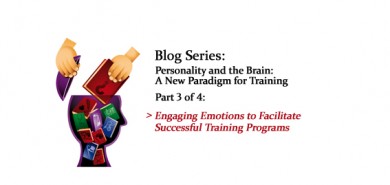ORGANIZATIONAL AND BUSINESS
Engaging Emotions to Facilitate Successful Training Programs

Emotions are what drive our attention and our behavior in the learning and development process.
Emotions affect learning, either enhancing the experience for the employee or shutting the process down because of fear or anxiety about their ability to learn or what might happen when they experiment with new behaviors in front of others. How employees feel during and after training strongly influences whether they will experiment with and apply what they have learned. If they are anxious, embarrassed, or otherwise uncomfortable, these feelings will impede the success of even the most skillfully designed training program.
Emotions are the result of interpreting sensory input and thinking. When input is interpreted favorably, positive emotions result, and curiosity about and exploration of new things are enhanced. However, when the input is interpreted negatively, our self-protective fight or flight responses kick in and employees don’t learn. They show up for training sessions but their goal is to survive the experience rather than trying new activities.
Assertiveness or the courage to face one’s fears isn’t just a set of tricks or strategies that can be “taught”; it only comes about through iterative experiences. The experiences lead to a sense of self-mastery and confidence, which helps employees to engage in their work and with others in new ways and enables them to take risks, to initiate productive action more often, and to contribute more value to the organization overall.
The kind of trust and emotional security people need to develop must be cultivated in the organization so that fear of change—whether personal or organizational—doesn’t get in the way. Otherwise, marching staff into trainings is like sending soldiers on a dangerous mission without understanding what motivates them to pursue it or what gives them the confidence that they can actually succeed. Facing a significant potential for failure and no clear benefit of success, many will simply choose not to engage.
Discover how to leverage the Striving Styles Personality System to increase the impact of your training programs.
Or, sign up for one of our upcoming webinars to learn more.
Read More of This Series: Part 1 - Why The Paradigm Needs to Change; Part 2 - Using Personality Tests to Understand How the Brain Learns; Part 4 - A New Paradigm for Training: The Striving Styles Personality System
Download our Complimentary Article: Lessons To Learn













0 Comments